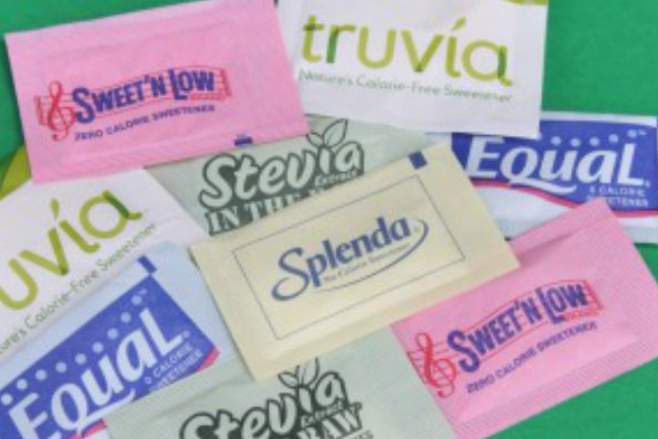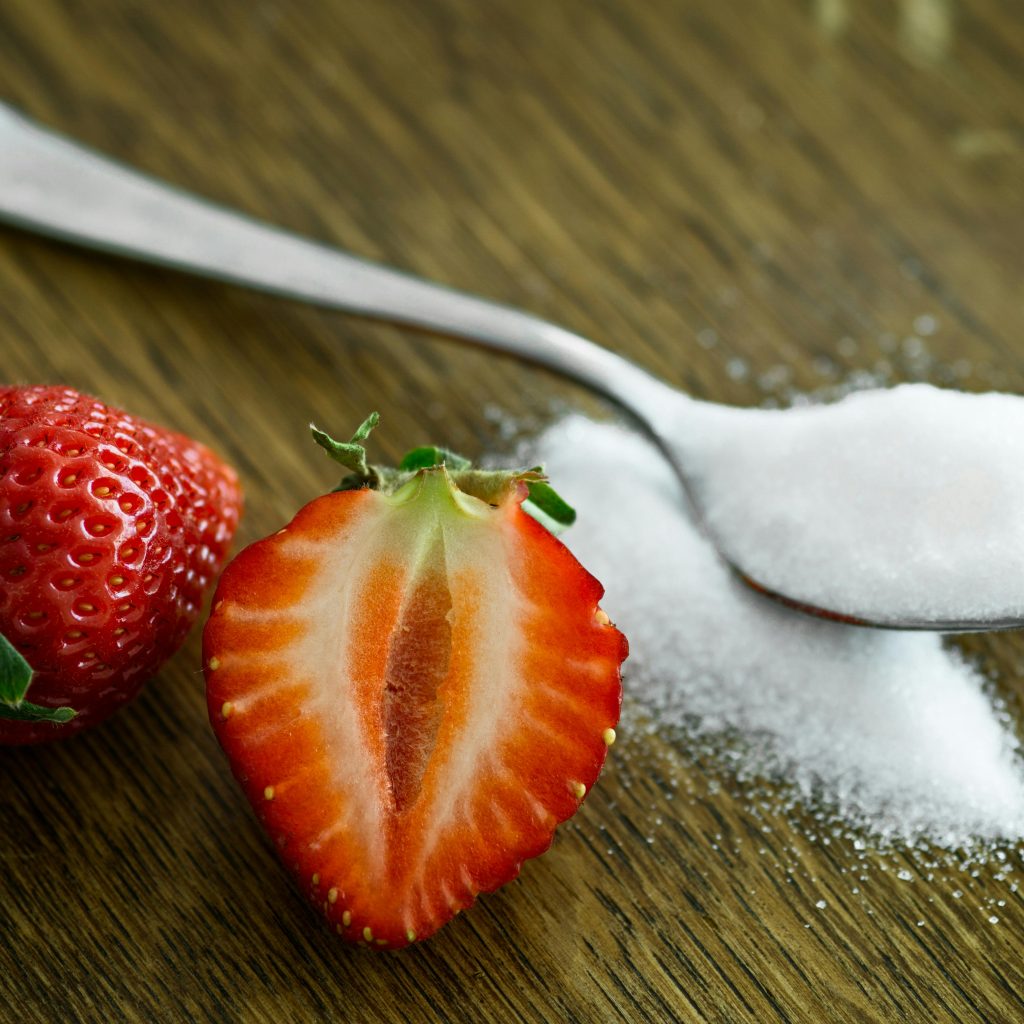Sugar Substitutes May Not Be Your Weight-Loss, Anti-Diabetic Ticket to Success – But Then Again, They Might Be
Introduction
Sugar substitutes are a topic of enormous interest to consumers. Food and drink makers never stop creating ever more clever ways to get more sugar into our diets by way of tasty snacks and drinks. Meanwhile, it’s been acknowledged for many decades that those empty sugar calories carry significant health and weight downside.
So a whole parallel economy has been poured into sugar substitutes, in order to replace sugar and allow people to, as it were, have their cake and eat it too, to indulge their sweet tooth and not pay a hefty price for it in pounds heart health, an diabetes.

As such, the topic garners an equal level of interest from scientists and producers bringing sugar-free products to market, and from researchers and regulatory bodies trying to evaluate the effectiveness and safety of all these products.
Sugar substitutes, increasingly realistic, tasty, and reasonably safe, have been arriving recently with regularity, and the most recent ones are impressive.
But in spite of decades of ready access to increasingly realistic, tasty, and and reasonably safe alternatives, the world has far more obesity, diabetes, and heart disease than it had 50 years ago.
That is by no means proof that sugar substitutes are the cause or even that there is a direct correlation. It is nowhere near that simple, and much debated among scientists. But the numbers suggest that continuing to indulge the sweet tooth, even with virtually no calories, fails to move the needle very much in our weight loss and metabolic goals.
Metabolism is Complex
Human metabolism is extraordinarily complicated. Nothing happens that does not affect something else, so something like replacing sugar with a sugar-like substance does not merely remove calories, and everything else goes its merry way.
Research has intensely focused on metabolic processes, taste sensors, digestive processes, liver and kidney processes, glucose levels, insulin release, triglyceride levels, cholesterol levels. Further studies look at population statistics relating to obesity, heart disease, cancer, and how overall diet and exercise affect results.
The pathways of glucose metabolism are mapped out and to an extent, decently understood. The pathways when we start adding and subtracting new chemicals are far less understood. Observed side effects are often hard to explain on a metabolic level.
Some of the sugar substitutes may trigger a glycemic response, some of them may paradoxically increase insulin resistance. How those happen are not well understood.
Population Studies Produce Confusing Results
Studies on the same topic produce differing results. Sometimes they expose side effects. How severe and how often the side effects show are very hard to pin down, and population studies often produce different results. For the interested consumer, more confusion is added by those with a financial interest. They may make unsupported assertions about their own or preferred product, and less flattering assertions about the products of their competitors.
The search for the ideal sweetener – tastes exactly like table sugar but has no side effects, cooks just fine, with no glycemic response, and few if any calories – is still underway.
The Most Common Sweeteners
These are the most common and popular sugar substitutes in basic terms, and what we know about them.
What consumers and researchers are most interested and concerned with are:
- potency as a sweetener
- suitability for high temperatures as in cooking
- taste and aftertaste
- source
- potential effect on the balance of gut bacteria
- effect on glycemic response, in which the body may believe it has ingested sugar and release insulin to process it
- potential minor side effects, commonly digestive discomfort, bloating, and diarrhea
- potential more serious side effects such as kidney and liver issues, cardiovascular issues, and even cancer
The list:
- Aspartame (Sweet,N Low) (ctrl-alt-T might do it)
- Sucralose (Splenda)
- Stevia
- Saccharin
- Acesulfame potassium (Ace-K)
- Sugar Alcohols like Mannitl, Erythritol, and Xylitol
- Monk Fruit Extract (Luo Han Guo)
Many of these sweeteners when sold on the grocery shelf, are packaged with some of the other sweeteners – for example, your stevia may also contain dextrose (a glucose-like sugar); your monk fruit extract may contain erythritol. Splenda was once merely the brand name for sucrolose. The Splenda brand now also produces monk fruit extract and stevia.
Adding to the confusion, the FDA has approved all of them, and considers each of them safe when used at normal levels. GRAS – generally recognized as safe. On the other hand, the WHO warns against all of them – except monk fruit, but only because that one is a very recent development and they have not gotten around to having an opinion on it.
What We Understand About Each
After decades of studies and tests, certainties are hard to come by, related to success and side effects. For each sweetener we will include some of what has been suggested by research. The most popular right now are sucralose and stevia, with former reigning king aspartame fading fast. The very promising newcomer is monk fruit extract.
Aspartame is an artificially manufactured low-calorie sweetener commonly used in sugar-free and “diet” products. It’s about 200 times sweeter than sucrose. It was approved by the FDA in 1974 (and again in 1981 after being called back in 1980) , and was the first widely popular sweetener after saccharin. While its taste leaves something to be desired, it is vastly superior to saccharin.
It is by far the most studied sugar substitute. Things sometimes associated with this product are gut bacteria imbalances, a glycemic response, some people experience headaches or other minor symptoms. It also has an aftertaste, though far less severe than that of saccharin.
Sucralose is a no-calorie sweetener made from sucrose, but it is not metabolized by the body. Also a shift in gut biota. Some experience bloating or gas. Studies do show some success in losing weight with sucralose compared to other sugar substitutes. Warnings of increased insulin resistance
Stevia is a natural sweetener derived from the leaves of the Stevia rebaudiana plant. It is several hundred times sweeter than sucrose and has no calories. Seem to have minimal impact or insulin release. There are some alarm bells on reproductive, renal, and cardiovascular systems. Has a licorice flavor and somewhat bitter aftertaste. Heat stable so useful for baking.
Those who are allergic to daisies, ragweed, chrysanthemums, or sunflowers may want to avoid stevia.
Saccharin is one of the oldest artificial sweeteners, patented in 1884. It is 300 to 400 times sweeter than sucrose and was for decades the sweetener of choice for diet sodas and other drinks. It was once the only large-scale
Acesulfame potassium (Ace-K) is a calorie-free sweetener often used in combination with other sweeteners. It is stable at high temperatures, making it suitable for baking. It is not naturally derived. It was approved by the FDA in 1988. As a sweetener packet, commonly known brands are Sunnet and Sweet One. It is most commonly used in fruit juice, molasses, syrup. It may have negative effects on the balance of gut bacteria.
Sugar Alcohols unlike many of the others, its level of sweetness is roughly comparable to that of sugar. The most common ones are erythritol, xylitol, and mannitol. Studies on sugar alcohol have hinted at some very troubling possible side effects. We have given sugar alcohols their own article to cover these in detail.
Monk Fruit Extract is A natural sweetener derived from the monk fruit found in China and Thailand. It is often used as a sweetener in beverages and foods. Very, very powerful sweet. Also heat stable, useful for baking. Mogrosides (plural word there) are the sweetening agent. So far there seem to be no downsides, and they may even directly improve the blood sugar profile. Some people don’t care for its fruity taste.
In closing
Keep in mind that research is far from settled. There seems to be no end of usage of phrases like
- some studies suggest/indicate potential associations
- evidence suggests
- have been associated with
- involve complex interactions
- researchers hypothesize
- research is still evolving/ongoing
- larger scale studies are required before
- long-term implications of….. are still areas of active research
The wisest course of all may be to use sugar substitutes as a short-term tool to wean yourself off of sweeteners entirely. The low-carb lifestyle shows much greater promise in reaching the desired goals.


